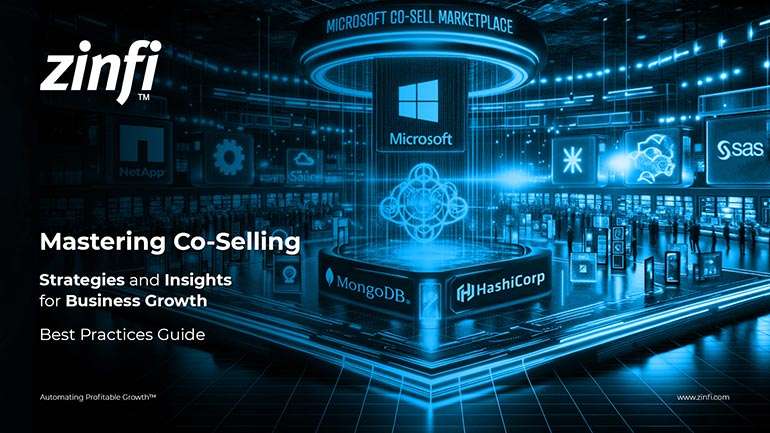Best Practices Articles

How Content Syndication Can Drive Sales Enablement
Most organizations selling in a business-to-business (B2B) environment today have implemented customer relationship management (CRM) software. While proper deployment of a CRM system is highly dependent on an organization’s ability to streamline its own internal sales processes, in many cases ineffective use of automation systems can also be attributed to an organization’s poor sales enablement capabilities. This is where content syndication can play an important role and lay the foundation for sales enablement—that is, when it’s done right. In this article we will explore what steps an organization can take to build on their CRM foundation and engage a cross-functional team to properly enable its sales team via content syndication.
Whether an organization is selling technology, insurance, financial products or other B2B solutions, in most cases the sales process can be broken down into stages for each of the three primary types of sales cycles: for small and medium business segments, for mid-market and enterprise, and for very large enterprise and government organization. With each of these segments, it is important to break down the lead-to-revenue cycle into proper stages to make sure that the sales process has been properly mapped to the targeted customer’s buying behavior. Before any content syndication strategy can be successfully implemented for sales enablement, it is essential to complete this task. With this principle as a backdrop, let’s briefly explore how content syndication can enable sales teams to achieve higher levels of performance.
When you think about a sales process—or perhaps you find it more useful to think about a buying process from the buyer’s perspective—the nature of engagement is directly dependent on the nature of the solution. Whether you are an SMB, a mid-market business or an enterprise, if your what you’re selling is a transactional product that generates somewhere between a few hundred and a few thousand dollar for each transaction, then it is not possible to provide a high level of sales touches. In this scenario, a company’s website has to do most of the selling, and this is where content syndication can play a critical role—not only by generating leads, but also by moving the buyer through a journey of content engagement that typically follows the classic buying cycle: awareness, interest, trial, purchase, repurchase. Most online retailers today have invested heavily to syndicate content at various stages of the buying cycle to ensure the buyer is gradually educated and engaged, trust is built and the transaction is completed.
On the other hand, if the transaction is essentially for a solution-centric product—for example, a financial product worth thousands of dollars or a complete technology solution or a medical device—then the human touch, by default, becomes increasingly important. Even during this process of human-led sales engagement, it is critical to provide syndicated content via a wide network of social, search and other appropriate engines to drive traffic to the site. However, once a lead comes in, sales needs to jump in immediately and engage, walking the buyer through appropriate steps. At this point, most companies tend to rely on their CRM systems, but the nature of the CRM systems makes it almost impossible for a sales person to access appropriate sales documents, marketing collateral, and other materials to support specific stages of the buying/selling process. Typically, the sales team ends up undertaking a frustrating search, looking through an internal portal or intranet, or perhaps searching for files saved in a folder on a shared drive. This is where content syndication from various corporate functions like marketing, product management, service management, finance and so on can be made instantly available at the right stages of the sales process. Assuming the organization has properly classified its selling/buying steps (discovery, qualification, development, negotiation, close, etc.), appropriate content can be syndicated via a sales enablement platform within the CRM sales steps.
Today we are seeing the rapid emergence of sales enablement tools to support this very fundamental need. Content syndication is emerging as a near-360 degree platform, extending from marketing (lead generation) to inside sales (sales qualification) to sales/business development (closure) and nurturing (back-to-market and installed-base teams). A typical sales enablement platform for a team of 100 sales people may end up costing $30,000 to $100,000 per year, but the significant productivity gains and customer satisfaction improvements realized from this investment easily justifies the deployment of such systems.
Prominent analysts like Forrester and Gartner have recently started to track the market for sales enablement platforms. So far there hasn’t been a lot of emphasis on content syndication—with the exception of one or two vendors—and most haven’t really taken a holistic approach towards integrated marketing and sales steps in a seamless way. Today’s sales enablement vendors tend to focus on three core areas: 1) content availability as a part of sales cycle, 2) sales rep training and certification and 3) lead-to-revenue tracking as a function of enablement steps. However, in most cases, due to the nature of digital engagement and the impact of social media on the buyer’s journey from search to procurement and repurchase, marketing steps need to be seamlessly integrated with sales activities. This is a crucial requirement that many solution providers still overlook.
Marketing and sales are no longer activities into two separate silos. A customer procuring a specific solution is also a perfect marketing target for a potential add-on solution. This is where online retailers like Amazon and Land’s End tend to excel by properly developing their customer database and by offering products and solutions that are not only relevant for the immediate purchase of a specific product, but also based on customer behavior that predicts interest in, and possible purchase of, potential similar products. This diagnostic ability is currently completely missing in most sales enablement tools. In the meantime, appropriate syndication of relevant content can go a long way toward bridging the gap until complete solutions are developed and rolled out.
In sum, content syndication—when mapped properly to sales stages (awareness, interest, trial, purchase, repurchase) of specific market segments (SMB, mid-market and enterprise) by transactional types (transactional or solutions)—can significantly increase customer engagement, satisfaction through the procurement process and sales productivity to reduce cost and increase revenue in a highly predictable fashion.
Best Practices Guidebook
 The Ultimate Guide to Partner Marketing Success Best Practices
The Ultimate Guide to Partner Marketing Success Best PracticesDownload Guide
 How to Start and Scale Partner Ecosystems Best Practices
How to Start and Scale Partner Ecosystems Best PracticesDownload Guide
 The Evolution of PartnerOps: Past, Present & Future Best Practices
The Evolution of PartnerOps: Past, Present & Future Best PracticesDownload Guide
 Mastering Channel Sales: Strategies, Best Practices, and Growth Tactics for 2025
Mastering Channel Sales: Strategies, Best Practices, and Growth Tactics for 2025Download Guide
 Winning with Partner Advisory Councils: Best Practices for Partner Engagement & Growth
Winning with Partner Advisory Councils: Best Practices for Partner Engagement & GrowthDownload Guide
 The Future of Partner Ecosystems Best Practices
The Future of Partner Ecosystems Best PracticesDownload Guide
 The AI Revolution: How Technology and Talent are Shaping the Future
The AI Revolution: How Technology and Talent are Shaping the FutureDownload Guide
 Top 105 Partner Management Metrics that Matter Best Practices
Top 105 Partner Management Metrics that Matter Best PracticesDownload Guide
 Mastering PRM Integration Best Practices
Mastering PRM Integration Best PracticesDownload Guide
 Building a Sales Partner Portal with Salesforce Best Practices
Building a Sales Partner Portal with Salesforce Best PracticesDownload Guide
 Building and Managing Partner Ecosystems Best Practices
Building and Managing Partner Ecosystems Best PracticesDownload Guide
 Mastering Co-Marketing and Co-Selling Best Practices
Mastering Co-Marketing and Co-Selling Best PracticesDownload Guide
 Transforming Partner Ecosystems Best Practices
Transforming Partner Ecosystems Best PracticesDownload Guide
 Mastering Partner Ecosystems Best Practices
Mastering Partner Ecosystems Best PracticesDownload Guide
 Mastering Partner Onboarding Best Practices
Mastering Partner Onboarding Best PracticesDownload Guide
 Partner Ecosystem Management Best Practices
Partner Ecosystem Management Best PracticesDownload Guide
 B2B Marketing in the Age of Intelligence Best Practices
B2B Marketing in the Age of Intelligence Best PracticesDownload Guide
 Multi-Partner Co-Selling Best Practices
Multi-Partner Co-Selling Best PracticesDownload Guide







